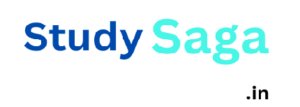GATE Mining Engineering Syllabus Download As Pdf
Section 1: Engineering Mathematics:
Linear Algebra: Matrices and Determinants; Inverse and Rank of matrix; Systems of linear
equations; Eigen values and Eigen vectors. Cayley-Hamilton Theorem.
Calculus: Limit, continuity and differentiability; Partial Derivatives; Mean value theorems;
Indeterminate forms and L’ Hospital’s rule; Maxima and minima; Taylor’s theorem; Sequences and series; Test for convergence; Fourier series.
Vector Calculus: Gradient; Divergence and Curl; Line; surface and volume integrals; Stokes, Gauss and Green’s theorems.
Differential Equations: Linear and non-linear first order ODEs; Higher order linear ODEs with
constant coefficients; Cauchy’s and Euler’s equations.
Probability and Statistics: Measures of central tendency and dispersion; hypothesis testing;
Binomial, Poisson, exponential and normal distributions; Correlation and regression analysis.
Numerical Methods: Solutions of linear algebraic equations; Interpolation; Integration of trapezoidal and Simpson’s rule; Single and multi-step methods for differential equations.
Section 2: Mining Geology, Mine Development and Surveying:
Mining Geology: Minerals, Rocks and their Origin, Classification, Ore Genesis; Structural Geology.
Mine Development: Methods of access to deposits; Underground drivages; Drilling method and machines; Explosives and energetics, blasting devices, blast design practices; Rock-Tool Interaction applicable to mechanical cutting systems and their selection.
Mine Surveying: Levels and levelling, theodolite, tacheometry, triangulation; Contouring; Errors and adjustments; Correlation; Underground surveying; Curves; Photogrammetry; EDM, Total Station, GPS, Basics of GIS and remote sensing.
Section 3: Geomechanics and Ground Control:
Engineering Mechanics: Equivalent force systems; Equations of equilibrium; Two dimensional frames and trusses; Free body diagrams; Friction forces; Particle kinematics and dynamics; Beam analysis.
Geomechanics: Geo-technical properties of rocks; Rock mass classification; Instrumentation and insitu stress measurement techniques; Theories of rock failure; Ground vibrations; Stress distribution around mine openings; Subsidence; Slope stability.
Ground Control: Design of pillars; Roof supporting systems; Mine filling. Strata Control and
Monitoring Plan.
Section 4: Mining Methods and Machinery:
Mining Methods: Surface mining: layout, development, loading, transportation and mechanization, continuous surface mining systems; highwall mining; Underground coal mining: bord and pillar systems, room and pillar mining, longwall mining, thick seam mining methods, Underground metal mining: open, supported and caved stoping methods, stope mechanization, ore handling systems.
Mining Machinery: Generation and transmission of mechanical, hydraulic and pneumatic power; Materials handling: wire ropes, haulages, conveyors, face and development machinery, hoisting systems, pumps; comminution methods and machinery.
Section 5: Surface Environment, Mine Ventilation and Underground Hazards:
Surface Environment: Air, water and soil pollution: Standards of quality, causes and dispersion of contamination and control; Noise pollution and control; Land reclamation; EIA.
Mine Ventilation: Underground atmosphere; Heat load sources and thermal environment,.air cooling; Mechanics of airflow, distribution, natural and mechanical ventilation; Mine fans and usage; Auxiliary ventilation; Ventilation survey and planning; Ventilation networks.
Underground Hazards: Mine Gases, Methane drainage; Underground hazards from fires,
explosions, dust and inundation; Rescue apparatus and practices; Safety management plan;
Accident data analysis; assessment; Mine lighting; Mine legislation; Occupational health and safety.
Section 6: Mineral Economics, Mine Planning, Systems Engineering:
Mineral Economics: Mineral resource classification; Discounted cash flow analysis; Mine valuation; Mineral taxation.
Mine Planning: Sampling methods, practices and interpretation; Reserve estimation techniques: Basics of geostatistics and quality control; Optimization of facility location; Mine planning and its components, Determination of mine size and mine life; Ultimate pit configuration and its determination, Optimum mill cut-off grade and its determination, Stope planning, Design of haul road, Selection of mining system vis-à-vis equipment system.
Systems Engineering: Concepts of reliability; Reliability of simple systems; Maintainability and
availability; Linear programming, transportation and assignment problems; Network analysis;
Inventory models; Queuing theory; Decision trees.
